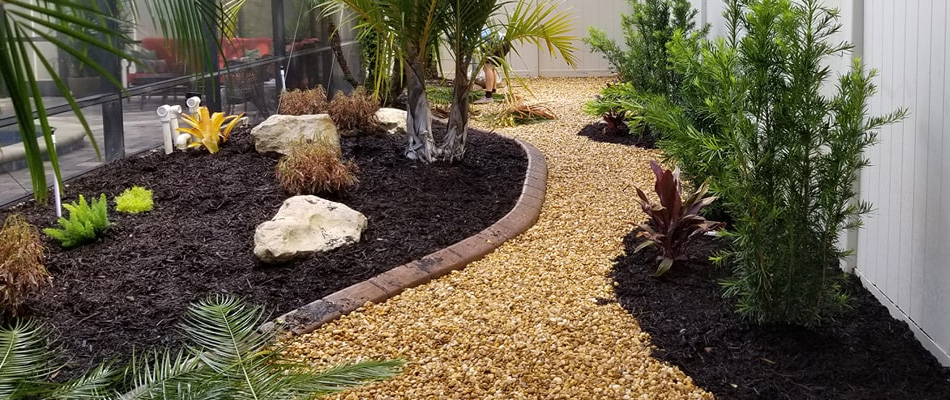The 8-Second Trick For Hilton Head Landscapes
The 8-Second Trick For Hilton Head Landscapes
Blog Article
The Single Strategy To Use For Hilton Head Landscapes
Table of ContentsSome Known Details About Hilton Head Landscapes Not known Facts About Hilton Head LandscapesExamine This Report on Hilton Head LandscapesThe 8-Second Trick For Hilton Head LandscapesThe Facts About Hilton Head Landscapes UncoveredThe smart Trick of Hilton Head Landscapes That Nobody is DiscussingNot known Facts About Hilton Head Landscapes
Line creates all types and patterns and can be made use of in a selection of ways in the landscape. Line in the landscape is produced by the side between two products, the outline or silhouette of a kind, or a long linear feature. Lines are an effective tool for the developer since they can be used to produce an unlimited selection of shapes and types, and they manage motion of the eye and the body.

Lines can have several features, such as those described listed below, but they generally offer various functions. Number 1. Lines in the landscape - Landscapers near me. The buildings of lines figure out exactly how people react to the landscape, both psychologically and physically. Straight lines are structural and strong; they produce a formal personality, are generally associated with a balanced style, and lead the eye straight to a centerpiece.
Hilton Head Landscapes for Beginners
Rounded lines produce an informal, natural, loosened up personality that is connected a lot more with nature and unbalanced balance. Curved lines move the eye at a slower pace and add mystery to the area by creating covert sights.
Vertical lines in the landscape consist of tall, narrow plant material, such as trees, or high structures, such as an arbor or a bird house on a post. Horizontal lines relocate the eye along the ground aircraft and can make a space really feel bigger. Reduced lines are extra restrained and produce a sensation of remainder or repose.
Some Known Details About Hilton Head Landscapes
Lines are additionally created by the upright kinds of developed attributes and plant product. There are 3 primary line types that develop form in the landscape: bedlines, hardscape lines, and plant lines.
Bedlines attach plant material to the residence and hardscape since the eye follows the line, moving the stare with the landscape. Hardscape lines are produced by the edge of the hardscape, which defines the constructed structure. Line can also be developed by long and slim products, such as a fence or wall surface.
The 20-Second Trick For Hilton Head Landscapes
Form is located in both hardscape and plants, and it is generally the dominant visual component that spatially arranges the landscape and often determines the design of the garden. The form of frameworks, plant beds, and yard accessories additionally determines the total kind motif of the garden. Formal, geometric types include circles, squares, and polygons.
Plants develop type in the yard with their lays out or silhouettes, continue reading this but type can also be defined by a space or unfavorable space between plants - Landscapers near me (https://www.mixcloud.com/h1tnhdlndscps/). Circles can be full circles, or they can be divided into half circles or circle sectors and incorporated with lines to create arcs and tangents
The Ultimate Guide To Hilton Head Landscapes
Circles can also be extended into ovals and ellipses for even more variety and interest. Circles are a strong design kind since the eye is always attracted to the facility, which can be made use of to emphasize a prime focus or connect various other types. Number 2. Circular types in hardscape and yard panels.
The square kind can likewise be fractional and previously owned continuously to produce a grid pattern. Unlike circles, squares are stronger on the brink, which can be aligned or overlapped to develop distinct patterns and even more complicated types. Polygons are many-sided kinds with straight sides. Triangles, for instance, are three-sided polygons.
Twisting lines often resemble the natural course of rivers or streams and can be referred to as smooth lines with deeply curved wavinesses. Twisting lines (Figure 3) function well for pathways, plant bedlines, and dry stream beds. Meandering lines can include rate of interest and mystery to a garden by leading audiences around edges to uncover brand-new views and areas.
Unknown Facts About Hilton Head Landscapes

Figure 5. Fragmented sides: stepping rocks in pathway. Type is one of the most long-lasting high quality of a plant (Landscapers near me). https://h1tnhdlndscps.blog.ss-blog.jp/2024-07-03?1720010270. Usual plant forms are well established and standardized, as type is the most constant and well-known quality of plants. Type can additionally be developed through the massing of plants, where the general mass creates a different type than a specific plant.
An extremely different kind must be made use of with careone or two work well as a prime focus, but a lot of wreak havoc. Natural plant forms, instead of over-trimmed types, need to establish the bulk of the make-up. The importance of total form is a lot more or much less depending on the seeing perspectivethe kind of a tree can appear fairly different to a person standing under the cover versus seeing the tree from a range in an open area.
See This Report about Hilton Head Landscapes
Plant kinds additionally produce and specify the void or open spaces in between the plants, developing either convex or scooped kinds in the voids. High-arching tree branches generally produce a concave open area under the branches, and a rounded cover with reduced branches fills the space to develop a convex form outdoors room under the tree.

Report this page